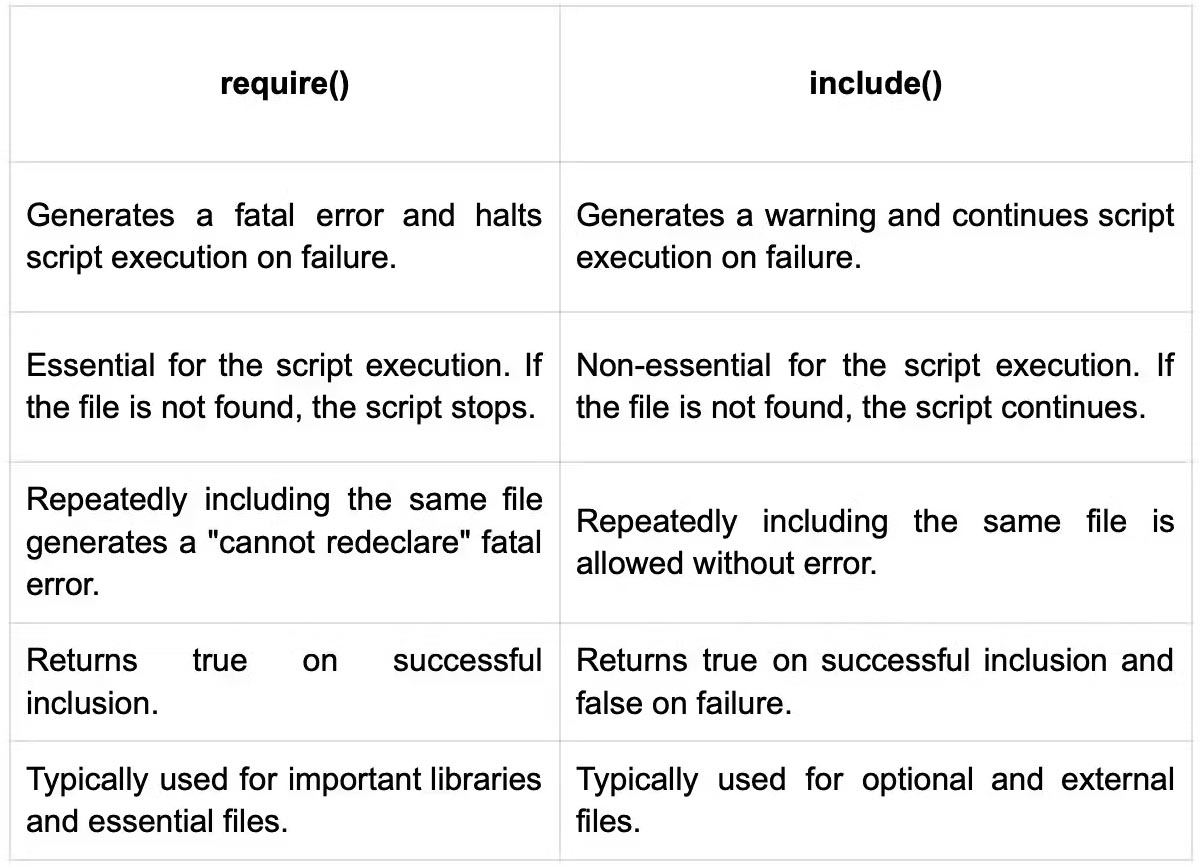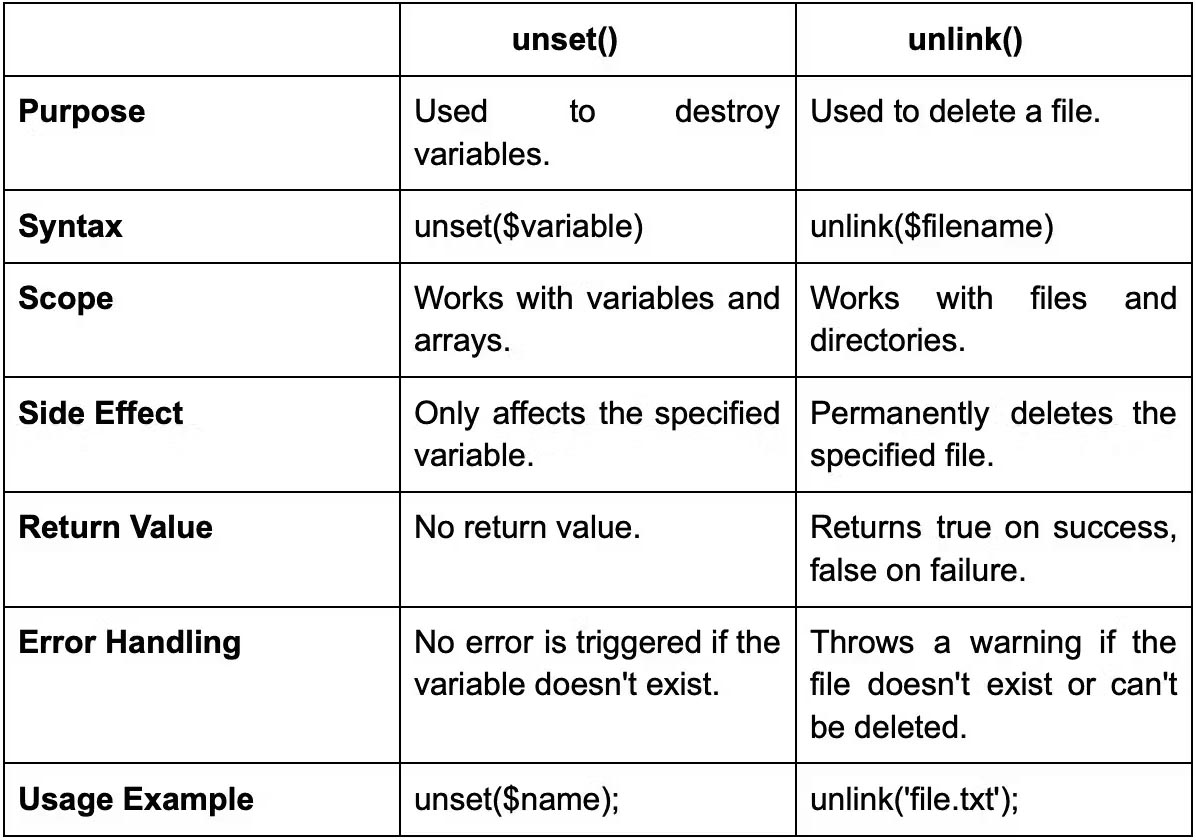
Basic PHP interview questions and answers

1 - What is the relationship between PHP and HTML?
PHP scripts can generate HTML, and information can be passed from HTML to PHP.
HTML is a client-side language, while PHP is a server-side language. So PHP runs on the server and returns texts, objects, and arrays, which we then utilize to display the values in HTML.
This engagement aids in bridging gaps and the effective usage of both languages.
2 - Talk about the significance of Parser in PHP?
A PHP parser is a piece of software that translates source code into computer-readable code.
The parser converts whatever set of instructions we provide in the form of PHP code into a machine-readable format.
The token gets all() functions in PHP that can be used to parse PHP code.
3 - What do you mean by hashing passwords?
Hashing a password is a method of transforming a single password into a hashed password string. The hashed password is usually one-way, meaning we can't move from the hashed password to the original password.
So the question is why we needed to utilize hashing to perform all of this; why do extra work when we can just record our passwords as a simple string in the database? All of this is being done just to improve security so that hackers do not steal credentials from our valued site.
md5, crypt, sha1, and bcrypt are some of the most often used cryptographic algorithms in PHP.
– The bcrypt hashing algorithm is the most widely used presently.
4 - What are the main types of errors?
The primary types of errors are:
- Notices: Notices are non-critical errors that can occur while the script is being executed. Users won’t see these. Using an undefined variable as an example.
- Warnings: Warnings are more important than notices. The script execution is not interrupted by warnings. These are viewable by default. Include() a file that does not exist, for example.
- Syntax or Parsing error: A forgotten quote mark, a missing semicolon at the end of a line, missing parenthesis, or excess characters are all examples of syntax errors. The PHP parser is unable to read and comprehend the code correctly, resulting in a parse error.
- Fatal: This is the most serious error of kind, and when it happens, the script's execution is immediately terminated. An example of a fatal error is accessing a non-existent object's property or calling need() on a non-existent file.
5 - What are the processes for setting up a new database with MySQL and PHP?
The 4 primary steps used to create a new MySQL database in PHP are given below:
- The PHP script is used to establish a connection to the MySQL server.
- The connection has been verified. You can test the connection by writing an example query.
- The queries for the database are typed in and then saved in a string variable.
- Then, one by one, the constructed queries will be run.
6 - In PHP, what is PDO?
PHP Data Object (PDO) is an acronym for PHP Data Object. PDO is a PHP extension that includes a core PDO class as well as database-specific drivers.
Any database written for the PDO driver can be accessed using the PDO extension.
PDO drivers are available for databases such as FreeTDS, Microsoft SQL Server, IBM DB2, Sybase, Oracle Call Interface, Firebird/Interbase 6, and PostgreSQL.
It provides a data-access abstraction layer that is lightweight and vendor-neutral. As a result, the function to issue queries and fetch data will be the same regardless of which database we utilize. It also concentrates on data access abstraction rather than database abstraction.
7 - What is PHP and what are the advantages of using PHP?
PHP is a widely-used scripting language primarily designed for web development. It stands for "Hypertext Preprocessor" and is embedded within HTML code. PHP enables dynamic content creation, database connectivity, and server-side scripting. With its extensive community and rich set of features, it has become one of the most popular languages for building dynamic websites and web applications.
PHP offers several advantages for web development:
- It has a low learning curve, which makes it accessible to beginners.
- It's an open-source language with a large community, and has extensive documentation and support.
- It is platform-independent, which means it can run on various operating systems.
- It has robust database integration, offers great performance, and has a wide range of frameworks and libraries available for efficient development.
8 - What are the rules for naming a PHP variable?
– Variable names must start with a dollar sign ($) followed by a letter or underscore.
– After the initial dollar sign, you can use any combination of letters, numbers, and underscores.
– Variable names are case-sensitive, so $myVariable and $myvariable are treated as different variables.
– You cannot use reserved words or PHP keywords such as if, else, foreach, etc., as variable names.
– Variable names should be descriptive and meaningful to improve code readability.
Here are some examples of valid variable names in PHP:
$age
$name
$_count
$total_sum
$myVariable9 - What is a PHP file?
A PHP file is a text file that contains PHP code, typically with a .PHP extension. It is an integral part of building dynamic web pages and applications.
A PHP file can include a combination of HTML, CSS, JavaScript, and PHP code. This versatility enables developers to integrate dynamic functionalities with the presentation layer.
When a client's web browser requests a PHP file, the server processes the PHP code within the file before sending the final output to the browser. This server-side execution allows developers to create dynamic and interactive content for the users.
10 - What is a PHP function?
A PHP function is a named block of code that performs a specific task and can be reused throughout a program. It encapsulates a set of instructions, accepts input parameters (optional), and can return a value (optional).
Functions help organize code, improve code reusability, and make it easier to maintain and debug.
– PHP provides a range of built-in functions and also allows users to create their own custom functions.
11 - What are the different types of variables in PHP?
There are several types of variables in PHP. The basic variable types include integers (whole numbers), floats (decimal numbers), strings (sequences of characters), booleans (true or false values), and arrays (ordered collections of values).
Additionally, PHP supports more complex data types such as objects (instances of classes), resources (references to external resources), and null (variables with no value assigned).
12 - What is the difference between require() and include() in PHP?
Here are the major differences between require() and include() functions in PHP:

13 - What is the syntax for defining a constant in PHP?
In PHP, constants are defined using the define() function or the const keyword. The define() function syntax is:
define('CONSTANT_NAME', value, case_insensitive);The const keyword syntax is:
const CONSTANT_NAME = value;Replace CONSTANT_NAME with the desired name of the constant. It should follow the naming conventions for PHP variables. Replace value with the actual value you want to assign to the constant.
For the define() function, the optional case_insensitive parameter is a boolean value that determines whether the constant name should be treated as case-insensitive. If set to true, the constant name can be used in any case (upper, lower, or mixed). If omitted or set to false, the constant name is case-sensitive, and its usage must match the case defined during its declaration.
14 - How do you declare a variable in PHP?
In PHP, you can declare a variable using the dollar sign ($) followed by the variable name.
You don't need to specify the variable type explicitly. For example, to declare a variable called "name" and assign it a value, you would write:
$name = "John";15 - What is the difference between echo and print in PHP?
In PHP, both echo and print are used to output data. echo is a language construct and does not require parentheses. It can output multiple strings at once, separated by commas. print is a function in PHP and must be used with parentheses. It can only output a single string at a time.
echo does not have a return value. It means that echo does not return anything and, therefore, cannot be used as part of an expression. On the other hand, print returns 1 after outputting the string successfully. This makes it different from echo, which does not have a return value.
16 - What are the different types of Array in PHP?
There are three main types of arrays of PHP: indexed arrays, associative arrays, and multidimensional arrays.
- Indexed arrays: use numeric keys to access elements and are created using square brackets (
[]). - Associative arrays: use key-value pairs, where keys are strings, and elements are accessed using the keys.
- Multidimensional arrays: are arrays that contain other arrays, creating a hierarchical structure with multiple levels of nesting.
17 - What is a PHP session?
A PHP session is a mechanism that allows you to store and retrieve data for a user across multiple requests. It enables the server to maintain stateful information about the user.
When a session is started, a unique session ID is generated and stored on the user's browser, while the associated data is stored on the server. This enables persistent data storage and user tracking during a browsing session.
18 - What is a for loop in PHP?
In PHP, a for loop is a control structure used for iterative execution. It allows you to execute a block of code a specific number of times. The for loop consists of three parts: initialization, condition, and increment/decrement.
It follows the syntax:
for (initialization; condition; increment/decrement) { // code }where the initialization sets the starting value, the condition defines the loop termination, and the increment/decrement updates the loop variable in each iteration.
19 - What is the difference between unset() and unlink() in PHP?
The difference between unset() and unlink() in PHP is:

20 - How do you start a PHP session?
To start a PHP session, you can use the session_start() function. This function initializes a new or existing session and allows you to store and retrieve data across multiple pages.
Call session_start() at the beginning of your PHP script. You can then set session variables and access them throughout your application.
All Comments